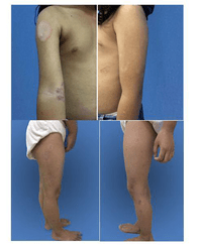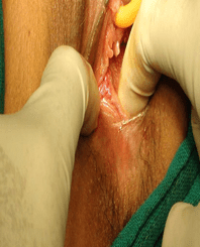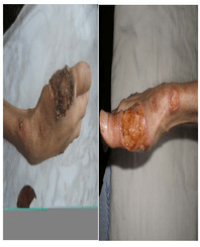
Childhood Hypopigmented Mycosis Fungoides: The Greatest Imitator
Mycosis Fungoides (MF) is the most common type of cutaneous T-cell lymphomas, especially found in individuals over the age of 50. The incidence of childhood MF is low, only about 0.01-0.03% per year. The clinical manifestations of MF show great variation, with scaly erythematous patch as the most common presentation. In children, hypopigmented patch manifests frequently and can mimic several skin disorders, from leprosy to post inflammatory hypopigmentation. We reported a case of a 5-year-old girl with multiple red patches on her trunk and extremities. Our first differential diagnoses were leprosy, erythema annulare centrifugum, and granuloma annulare. Histopathology and immunochemistry findings correspond to hypopigmented MF. She was treated with mometasone furoate 0.1% cream and Narrow Band Ultraviolet B (NBUVB) for over a year.
Nahla Shihab*


